Historical Places in Arizona provide an intriguing preview of Native American heritage, Old West legend, and pioneer lore. From the ancient cliff dwellings to legendary frontier towns and imposing missions, Arizona boasts a kaleidoscope of history rich with Native cultures, Spanish conquistadors, and pioneers. Wandering through these sites, you see the indomitable nature of the Southwest, where desert meets centuries of human determination and creativity.
10 Historical Places To Visit In Arizona
These historical places in Arizona tell a story of survival, intelligence, and heritage, and the state’s rich heritage is to be discovered:
1. Mesa Verde National Park
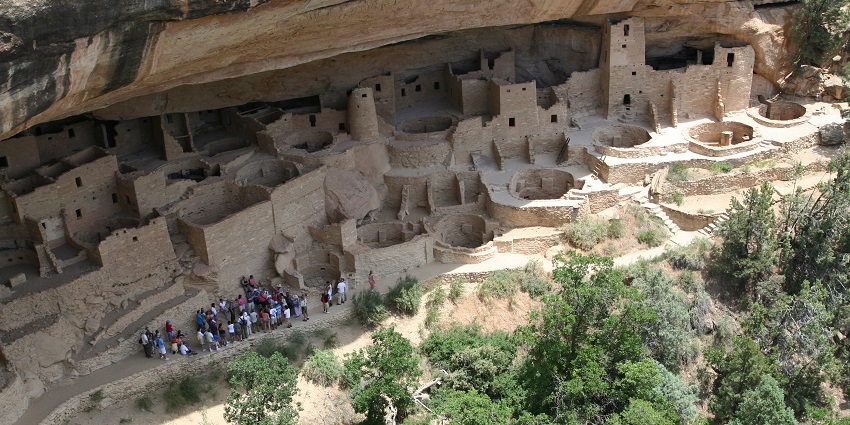
Photo: Massimo Catarinella / Wikimedia Commons
Mesa Verde National Park is one of the most breathtaking historical places in Arizona. This UNESCO World Heritage Site preserves the Ancestral Puebloan, or Anasazi, cliff dwellings. These beautiful adobe and stone homes are elegantly chiselled into magnificent sandstone cliffs, a testament to gigantic architectural prowess and a rich insight into Native American survival techniques, culture, and way of life. Apart from its breathtaking archaeological sites, Mesa Verde also boasts a grand natural beauty that gives it the best hideaway for history buffs and nature lovers both who desire to immerse themselves in the rich Southwestern heritage.
Location: On the border of Cortez, Arizona (although mostly in Colorado, toured from Arizona)
Major Attractions: Cliff Palace, Balcony House, Spruce Tree House
How To Reach: Overland from Phoenix or Flagstaff
2. Tombstone Historic District
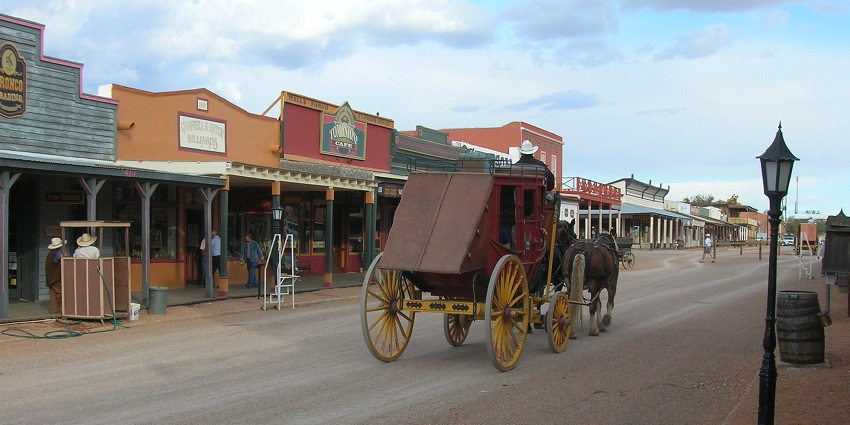
Photo: Grombo / Wikimedia Commons
Tombstone Historic District, also lovingly known as “The Town Too Tough to Die,” is an exciting glimpse of the violent past of the Wild West. The famous town is most famous for the legendary Gunfight at the O.K. Corral, a turning point in Western history. The town boasts restored saloons, old-time structures, and stores that used to be homes to cowboys, lawmen, and miners. Living history performances and hands-on exhibits bring back the tales of this tough and enduring town. Tombstone offers an unforgettable experience to be immersed in the drama, danger, and essence of America’s Wild West period.
Location: Cochise County, Arizona
Major Attractions: O.K. Corral, Bird Cage Theatre, Tombstone Courthouse State Historic Park
How To Reach: By car from Tucson or Phoenix
3. Montezuma Castle National Monument
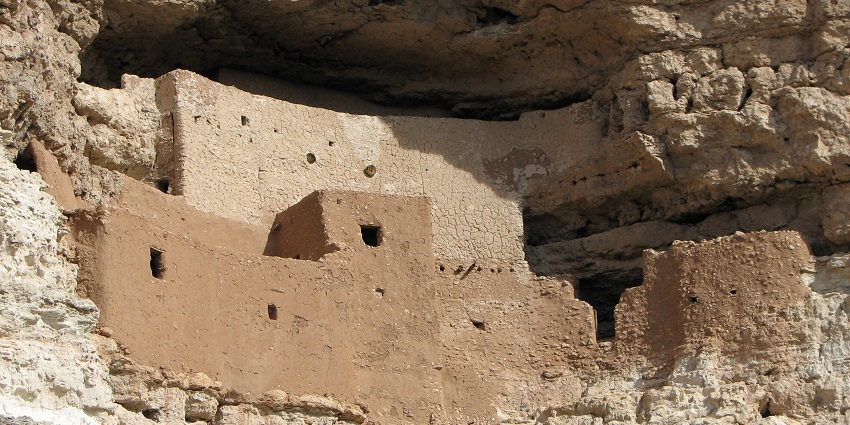
Photo: Bernard Gagnon / Wikimedia Commons
Montezuma Castle National Monument is a wonderful testament to ancient Native American architecture. This incredible cliff dwelling is one of the best preserved in North America, a five-story pueblo carved into a limestone cliff wall with elegance. The building is a testament to the Sinagua’s superior engineering ability and cultural refinement, which attuned to the surroundings with masterful craftsmanship. The monument provides an insight into a vibrant community that in the past flourished in the American Southwest, and thus it is a place of interest for history and archaeology buffs.
Location: Camp Verde, Arizona
Major Attractions: San Xavier del Bac Mission, Tumacacori Museum, and Visitor Centre exhibits
How To Reach: By car or bus from Interstate 17
4. San Xavier Del Bac Mission
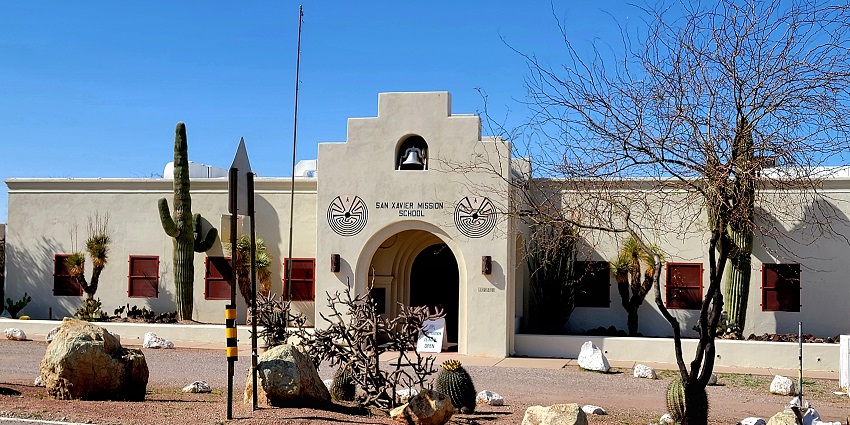
Photo: Cullen328 / Wikimedia Commons
San Xavier del Bac Mission, or the “White Dove of the Desert,” is a quaint and historic Spanish Catholic mission built in 1692. It is one of the most significant historical places in Arizona. Situated close to Tucson, Arizona, it is renowned for its beautiful Spanish Colonial design with its pristine white stucco facade and elaborate trimmings. San Xavier del Bac is not only a religious structure; it is an important cultural landmark that bridges the past and the present and provides us with some sense of the history and long-standing influence of Spanish influence in the American Southwest.
Location: Near Tucson, Arizona
Major Attractions: Mission church, ornately decorated altar, religious artwork
Getting There: By car or public transportation from Tucson
5. Jerome Historic District
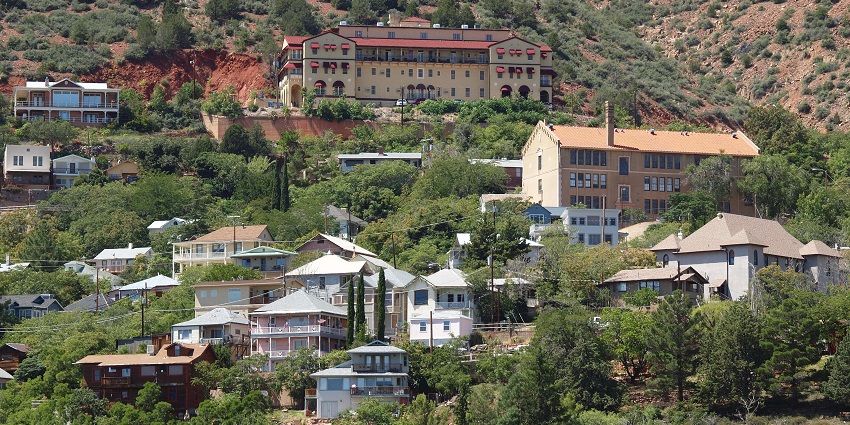
Photo: Gillfoto / Wikimedia Commons
Jerome Historic District, perched on the crest of a steep hillside, was a booming copper mining town in its day, with its wild activity during the mining boom era. With every step around the district, you get to observe vintage buildings, visit art galleries, and take in gorgeous panoramic views of surrounding mountains and valleys. Jerome’s blend of successful mining heritage and lively modern culture is a fascinating place to visit for those with an interest in American West history and culture.
Location: Outside Prescott, Arizona
Major Attractions: Jerome State Historic Park, former mines, art galleries
How To Reach: By car from Phoenix or Flagstaff
6. Grand Canyon Village Historic District
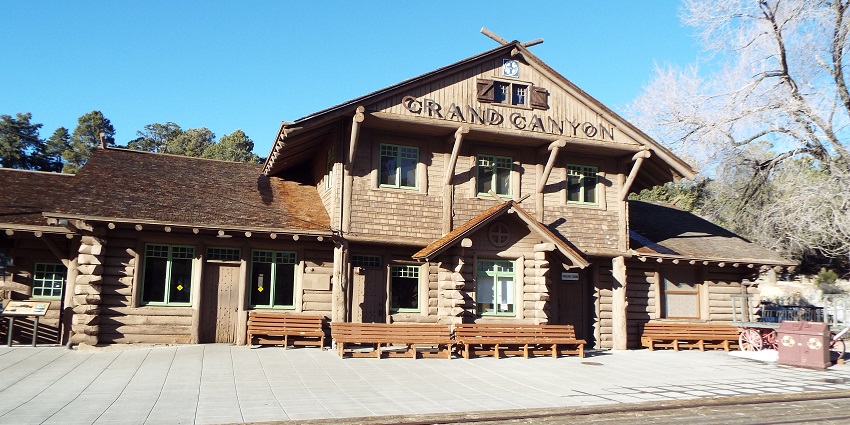
Photo: Marine 69-71 / Wikimedia Commons
Grand Canyon Village Historic District is more than just an introduction to the breathtaking Grand Canyon, it’s a look at America’s tourist history. Treading the streets of the village, you can experience the ambience of days gone by while basking in the convenience of the present, creating a special place where history and nature converge. The district is still a valuable hub from which to visit one of the world’s natural wonders, steeped in cultural and historic significance amid the grandeur of the canyon.
Location: Grand Canyon National Park
Major Attractions: El Tovar Hotel, Kolb Studio, Grand Canyon Railway Depot
How To Reach: By automobile, bus, or train from Flagstaff
7. Heard Museum
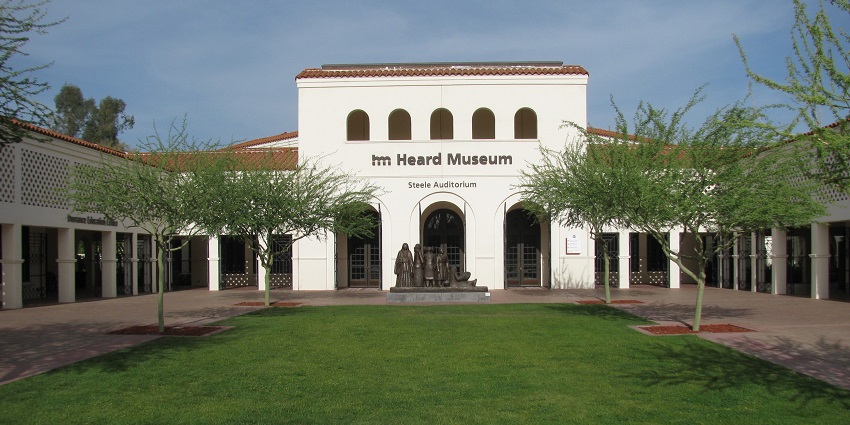
Photo: Yassie / Wikimedia Commons
Phoenix’s Heard Museum is a top-notch museum that has committed itself to the commemoration of Native American art and tradition. With its vast collection of art, the museum displays historic and modern art by Native American artists across the Southwest. The museum also hosts cultural events, performances, and educational programs that facilitate learning about Native American heritage and history. It is an experiential space that invites people to live the long-lasting legacy and living spirit of the region’s Native people.
Location: Phoenix, Arizona
Major Attractions: Native American art displays, cultural celebrations
How To Reach: Mass transit or automobile in central Phoenix
8. Canyon De Chelly National Monument
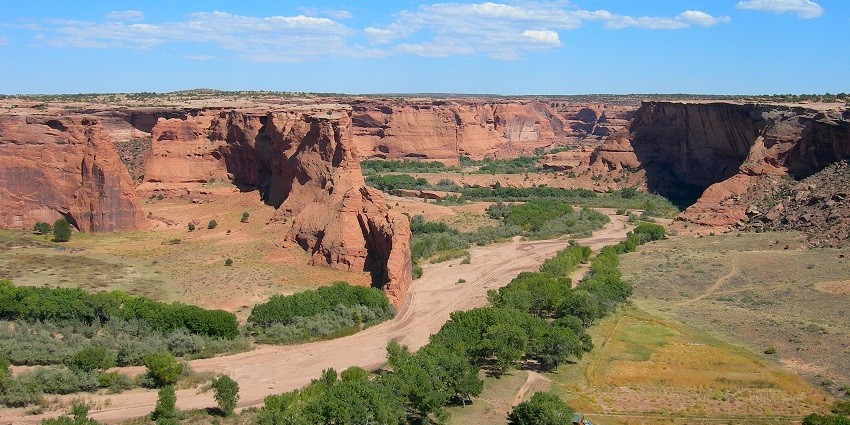
Photo: RyderAce / Wikimedia Commons
A distinctive combination of living heritage, the Canyon de Chelly National Monument lies within the Navajo Nation. The beautiful canyon features ancient cliff dwellings and petroglyphs created by the Ancestral Puebloans, with great archaeological treasures centuries old. Aside from its past, it is a vibrant, living community where Navajo clans continue their traditional practices. The red sandstone canyon walls with their high level and huge openings are significant spiritually to the Navajo, so the land is sacred and culturally meaningful.
Location: Northeastern Arizona, near Chinle
Major Attractions: Spider Rock, White House Ruin
How To Reach: By car from Tucson or Phoenix
9. Kartchner Caverns State Park

Photo: Shaunnamm / Wikimedia Commons
Kartchner Caverns State Park, discovered in 1974 and opened to the general public for the first time in 1999, is a historical place in Arizona. The stunning cave system, made of limestone, consists of extremely well-preserved stalactites and stalagmites perfectly preserved for thousands of years. The caves have awe-inspiring geological marvels, unveiling the natural subterranean past, which is hardly recognisable. Because of strict conservation practices, the vulnerable cave system is protected, allowing travellers to observe its magnificence in safety.
Location: Near Benson, Arizona
Major Attractions: Self-guiding walking tour, historic park volunteer program, country store
How To Reach: By car from Tucson or Phoenix
10. Fort Apache Historic Park
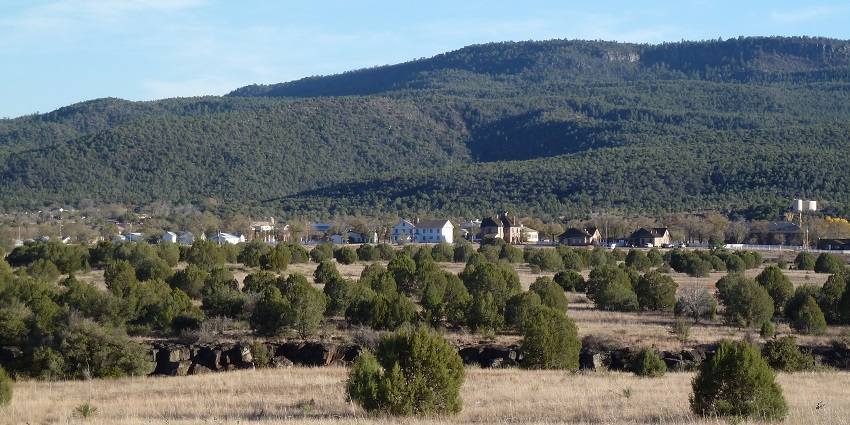
Photo: Chris English / Wikimedia Commons
Fort Apache Historic Park preserves an important chapter in American history, The park contains well-preserved military structures that provide insight into life and activity on the frontier during the 19th century. Visitors may go to a museum full of exhibits and artefacts that tell both the war and the Native American aspects of history, giving an equitable picture of how engaged and complex the battles between the U.S. military and the Apache nations were.
Location: Close to White River, Arizona
Principal Attractions: Fort structures, White Mountain Apache cultural exhibit
How To Reach: By automobile, bus, or train from Flagstaff
From ancient Native American cliff dwellings through Wild West towns and ancient missions, Arizona is a historic tour of the American Southwest. They unveil centuries of cultural heritage, breathtaking architecture, and a lifetime of memories. For history buffs and curious travellers, uncovering Arizona’s past uncovers a diverse and inspiring landscape. Explore more such packages offered by TripXL, and make unforgettable memories at your favourite destinations.
Cover Photo: W. Bulach / Wikimedia Commons


 WhatsApp
WhatsApp
 Twitter
Twitter









